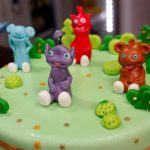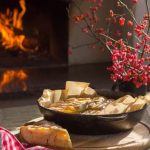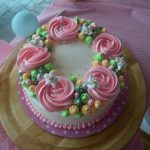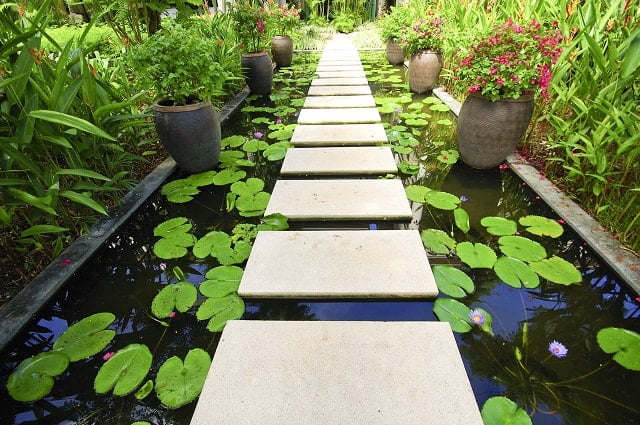Are you wondering how to make water for cake decorating? It may seem like a simple ingredient, but water plays a crucial role in the art of cake decorating. From adhering fondant to creating stunning watercolor effects, the type of water you use can greatly impact the outcome of your cake decorating projects.
Cake decorating is an intricate and creative process that requires attention to detail and precision. Whether you’re a seasoned professional or a novice baker, using water in cake decorating is essential for achieving beautiful and professional-looking results. In this article, we will explore the importance of water in cake decorating, different types of water that can be used, and provide tips for finding the best water for your baking needs.
When it comes to cake decorating, not all waters are created equal. Distilled, tap, filtered – the options can be overwhelming. Understanding the differences between these types of water and their impact on your cake decorating projects is key to achieving the desired results. Additionally, we will provide a step-by-step guide on how to make your own water for cake decorating, as well as creative ways to utilize it for various decorative effects.
The Role of Water in Cake Decorating
Different types of water can be used for cake decorating, including distilled, tap, filtered, or even flavored water. Each type of water has its own properties that can affect the outcome of your decoration.
For instance, distilled water is free from impurities and minerals which makes it ideal for creating a smooth and clean finish when applying fondant or gum paste. On the other hand, tap water may contain impurities that can affect the texture and color when mixing with food coloring for a watercolor effect.
When looking for the best water for cake decorating, consider the specific purpose you will be using it for. If you are planning to create a watercolor effect on your cake, using filtered or spring water may produce more vibrant colors compared to tap water. For adhering fondant or gum paste decorations, using distilled or boiled and cooled tap water can provide the best adhesion without affecting the appearance of your decorations.
Here is a step-by-step guide on how to make your own water for cake decorating:
- Boil tap water and let it cool to room temperature.
- Once cooled, transfer the boiled and cooled tap water into a clean container with a lid.
- Store the homemade cake decorating water in the refrigerator to keep it free from impurities until ready to use.
By following these steps and choosing the right type of water for your specific needs, you can ensure that your cakes turn out beautifully decorated every time.
Different Types of Water for Cake Decorating (Distilled, Tap, Filtered, Etc)
When it comes to cake decorating, the type of water you use can make a significant difference in the outcome of your confectionery masterpiece. Different types of water, such as distilled, tap, and filtered, each have their own unique properties that can affect the overall appearance and taste of your cake. It’s important to understand the differences between these various options in order to achieve the best results for your cake decorating endeavors.
Distilled water is one of the most commonly used types of water for cake decorating. It is pure and free from any impurities or chemicals that may alter the texture or color of your icing or fondant.
On the other hand, tap water may contain trace amounts of chlorine or other minerals that could impact the flavor and consistency of your cake decorations. Filtered water falls somewhere in between, as it undergoes a purification process to remove contaminants but may still retain some beneficial minerals.
Here are some tips for finding the best type of water for cake decorating:
- Consider using distilled water for high-precision work such as intricate piping or delicate sugar work
- Use filtered water if you want to maintain some mineral content while still ensuring a clean canvas for your decorations
- Be cautious when using tap water and consider testing its impact on your ingredients before committing to using it regularly
By taking the time to carefully select and prepare your water for cake decorating, you can ensure that your creations turn out just as beautiful and delicious as you imagined them to be. Now let’s explore how to make your own water for cake decorating at home.
Tips for Finding the Best Water for Cake Decorating
When it comes to cake decorating, finding the best water to use is crucial for achieving professional-looking results. While it may seem like a small detail, the type of water you use can make a big difference in the outcome of your cake decorations. Here are some tips for finding the best water for cake decorating.
First and foremost, it’s important to consider the quality of the water you are using. Distilled or filtered water is often recommended for cake decorating, as it is free from impurities and chemicals that could potentially affect the taste or appearance of your cakes. Tap water, on the other hand, may contain minerals and additives that could lead to discoloration or off-flavors in your icing or fondant.
Another factor to consider when choosing the best water for cake decorating is its temperature. Using cold water can help slow down the melting process if you’re working with chocolate decorations or buttercream frosting. On the other hand, warm water can be used to dissolve powdered food coloring or gelatin for creating vibrant colors and shiny glazes.
In addition to considering the quality and temperature of the water, you should also pay attention to its pH level. Water with a neutral pH level is ideal for cake decorating, as it won’t react with ingredients like sugar or food coloring, which could alter their properties.
By taking these factors into account, you can ensure that you are using the best possible water for your cake decorating needs. And if you want more control over what goes into your water mixture, making your own at home can give you peace of mind and confidence in using only high-quality ingredients in your creations.
Step-by-Step Guide on How to Make Your Own Water for Cake Decorating
Cake decorating is an art form that requires attention to detail and the right tools. Water is an essential element in cake decorating, used for various purposes such as adhering fondant, creating a watercolor effect, and moistening the surface of a cake before applying decorations. Using the right type of water is crucial to achieve professional-looking results.
When it comes to choosing the best water for cake decorating, there are different options to consider. Distilled water is a popular choice due to its purity, while tap water may contain impurities that affect the appearance of decorations. Filtered water can also be used, depending on its quality and mineral content. The key is to use water that is free from any foreign particles or chemicals that could alter the texture or color of the cake.
If you prefer to create your own water for cake decorating, you can easily do so by boiling tap water and allowing it to cool down to room temperature. This process helps eliminate impurities and makes the water safe for use in decorating cakes. It’s important to note that using hot or warm water directly on a cake can affect its structure and integrity, so always ensure that the water has cooled down before using it for decorating purposes.
In addition to using homemade distilled or filtered water, there are also other creative ways to customize your own “decorating” water by adding natural flavor extracts or food coloring to achieve unique effects in your cake decorations.
| Water Type | Advantages |
|---|---|
| Distilled Water | Pure and free from impurities |
| Filtered Water | Depends on quality but can be suitable for cake decorating |
| Homemade Boiled Water | Safe for use after cooling down; impurity-free |
Creative Ways to Use Water in Cake Decorating (Watercolor Effect, Adhering Fondant, Etc)
When it comes to cake decorating, water is an essential tool that can be used in a variety of creative ways to enhance the overall design and appearance of your cake. From creating a beautiful watercolor effect to adhering fondant, using water can take your cake decorating skills to the next level. In this section, we will explore some creative ways to use water in cake decorating and provide you with tips on how to achieve stunning results.
Creating a Watercolor Effect
One of the most popular and visually stunning techniques for using water in cake decorating is creating a watercolor effect. By mixing food coloring with water and lightly brushing it onto the surface of your cake, you can achieve a beautiful, ethereal look that can mimic the delicate strokes of a watercolor painting. This technique allows for endless creativity and experimentation, as you can blend different colors together to create unique and personalized designs on your cake.
Adhering Fondant
Another common use for water in cake decorating is adhering fondant. Whether you are covering your entire cake with fondant or adding small decorative elements, using water as an adhesive can ensure that your fondant sticks securely to the surface of your cake.
Simply brush a small amount of water onto the area where you want the fondant to adhere, and gently press the fondant into place. This method provides a strong bond without leaving behind any visible residue, making it ideal for achieving seamless and professional-looking results.
Adding Edible Decorations
In addition to creating a watercolor effect and adhering fondant, water can also be used to attach edible decorations such as sugar flowers, sprinkles, or edible pearls onto your cake. By lightly brushing the back of the decoration with water before placing it onto the cake surface, you can ensure that it stays in place without damaging or distorting its shape.
This method is perfect for adding intricate details and embellishments to your cakes, allowing you to customize them according to any theme or occasion.
By utilizing these creative ways to use water in cake decorating, you can elevate your designs and bring your artistic vision to life with precision and finesse.
Common Mistakes to Avoid When Using Water for Cake Decorating
When it comes to cake decorating, using water is a common practice for various techniques such as adhering fondant, creating a watercolor effect, and more. However, it’s important to be mindful of certain mistakes that can occur when using water in cake decorating. By being aware of these pitfalls, you can ensure that your cake decorating process goes smoothly and yields professional-looking results.
One common mistake to avoid when using water for cake decorating is using the wrong type of water. Depending on your location, tap water may contain impurities or chemicals that can affect the taste and appearance of your cakes. It’s best to use distilled or filtered water to prevent any unwanted flavors or substances from affecting your creations.
Another mistake to steer clear of is using too much water when adhering fondant or creating a watercolor effect on your cakes. Using excessive amounts of water can cause the colors to bleed or the fondant to become overly sticky, resulting in a messy and unprofessional look. It’s essential to use just enough water to achieve the desired effect without overdoing it.
Overlooking the temperature of the water is another common mistake in cake decorating. Using cold water when adhering fondant can cause condensation, making it difficult for the fondant to stick properly. On the other hand, using hot water can melt the fondant or affect the consistency of colored icing. Room temperature water is ideal for most cake decorating purposes.
Taking these considerations into account will help you elevate your cake decorating skills and create visually stunning confections with ease.
| Common Mistakes | How to Avoid |
|---|---|
| Using tap water | Use distilled or filtered water instead |
| Using too much water | Be mindful of the amount used for various techniques |
| Using incorrect temperature of water | Opt for room temperature or as specified in recipes |
Additional Resources and Tools for Cake Decorating With Water
When it comes to cake decorating, water is an essential tool that can be used in various ways to achieve beautiful and professional-looking designs. In addition to using water as a simple adhesive for fondant, there are several creative techniques that utilize water to enhance the visual appeal of cakes.
Whether you are a beginner or an experienced baker, it’s important to have the right resources and tools at your disposal to take your cake decorating skills to the next level.
Watercolor Effect
One creative way to use water in cake decorating is to create a watercolor effect on fondant or buttercream. By diluting food coloring with water and using a paintbrush, you can achieve stunning watercolor-like designs on your cakes. This technique allows for endless possibilities and is a great way to add artistic flair to your creations.
Piping Gel
Piping gel is another useful tool that can be used in conjunction with water for cake decorating. It can be mixed with water to create a transparent glaze or used on its own for creating intricate details on cakes. Piping gel is particularly useful for achieving a glossy finish on decorations and can be tinted with food coloring for added versatility.
Cake Decorating Brushes
Investing in high-quality cake decorating brushes is crucial for precise and detailed work when using water in cake decorating. These brushes should be exclusively dedicated for food use and come in various sizes, allowing you to apply water accurately and delicately. Using the right brushes will help ensure that your designs are executed flawlessly every time.
By having these additional resources and tools at your disposal, you will be well-equipped to explore the many creative possibilities of using water in cake decorating. Whether you’re looking to experiment with new techniques or refine your existing skills, having the right tools can make all the difference in achieving professional results.
Conclusion
In conclusion, it is clear that water plays a crucial role in cake decorating, whether it’s for adhering fondant, creating a watercolor effect, or simply moistening the cake layers. The type of water used can have a significant impact on the overall outcome of the decorated cake. Throughout this article, we have discussed the importance of using the right water for cake decorating and how it can affect the finished product.
When it comes to finding the best water for cake decorating, there are several options to consider, such as distilled, tap, and filtered water. Each type of water has its own benefits and drawbacks, so it’s essential to choose the one that best suits your specific needs and preferences.
Additionally, we have provided a step-by-step guide on how to make your own water for cake decorating, giving you complete control over the quality of the water you use.
By understanding the role of water in cake decorating and learning how to make water for cake decorating effectively, you can elevate your skills and achieve stunning results in your creations. With these insights and tips at hand, you are well-equipped to take your cake decorating to the next level and create beautiful edible works of art that will wow everyone who sees them.
Frequently Asked Questions
What Can I Substitute for Piping Gel?
Piping gel is commonly used in cake decorating to create shiny, smooth surfaces or to adhere edible decorations. If you don’t have piping gel, corn syrup is a common substitute as it provides a similar glossy finish.
What Is a Substitute for Cake Gel?
Cake gel is often used to improve the texture and moisture of cakes, but if you don’t have any on hand, a simple substitution is vegetable oil. Adding a small amount of vegetable oil to your cake batter can help achieve a similar result.
How Do You Make a Waterfall Effect on a Cake?
To create a waterfall effect on a cake, start by using different shades of blue icing to create the base of the waterfall. Then, use white icing to create flowing water using upward strokes. Finish by adding fondant or modeling chocolate rocks at the base for a realistic touch.

Welcome to my blog about home and family. This blog is a place where I will share my thoughts, ideas, and experiences related to these important topics. I am a stay-at-home mom with two young children. I hope you enjoy reading it! and may find some helpful tips and ideas that will make your home and family life even better!





